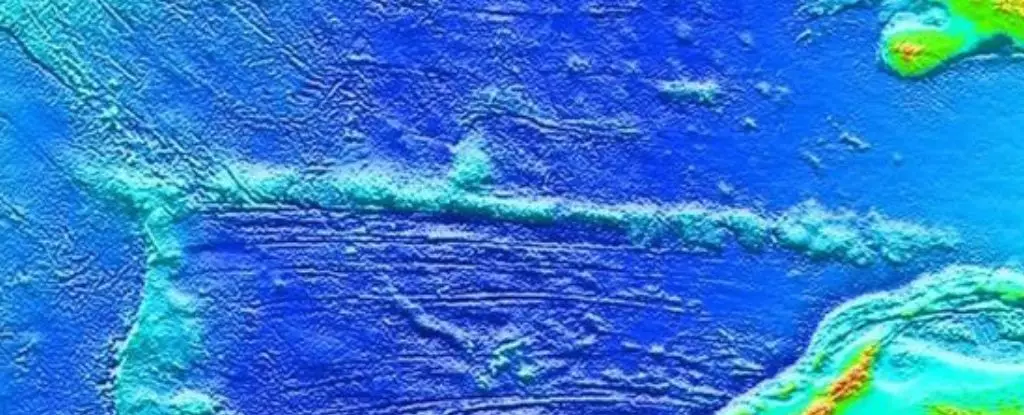The Indian Ocean, one of the world’s vastest aquatic expanses, harbors an astonishing geological structure: the Ninetyeast Ridge. Spanning 5,000 kilometers (approximately 3,107 miles), this underwater mountain range eclipses the North American Rockies in length, yet it remains concealed beneath the ocean’s surface. Recent research has shed light on the intriguing formation process of this significant geological feature, revealing surprising insights about its origin that challenge previous geological models.
At the heart of the Ninetyeast Ridge’s formation lies the concept of seamounts, which are essentially underwater volcanoes that rise from the ocean floor. These geological formations, found in all of Earth’s oceans, arise from ‘hotspots’—areas where intense heat from the Earth’s mantle causes melting and produces molten rock. This hot material ascends through the crust, often resulting in the formation of an underwater mountain or volcano. Early theories posited that these hotspots were static entities, with tectonic plates shifting over them like fabric moving over a sewing needle. This model aptly described volcanic trails until researchers began to uncover evidence suggesting a more dynamic interaction between these hotspots and tectonic movements.
In their groundbreaking study, researchers have proposed a reimagined model of hotspot mechanics specifically for the Ninetyeast Ridge. Rather than being stationary, the hotspot responsible for this ridge—identified as the Kerguelen hotspot—appears to have exhibited significant movement over geological timescales. Dr. Hugo Olierook, a leading geoscientist, explains that this dynamism markedly contrasts with the traditional understanding of hotspots. Notably, this movement entails the hotspot acting more like a moving fountain pen, with the magma being deposited in layers as it traveled across the mantle, rather than a stationary source.
The study, which involved an international collaboration spanning Australia, Sweden, China, and the United States, focused on analyzing basalt samples from the ridge. The findings suggest that from 83 to 66 million years ago, the peaks of the Ninetyeast Ridge formed at only half the rate of the adjoining seafloor’s spreading. This intriguing rate of formation provides compelling evidence that the hotspot did not remain fixed beneath the Indian Plate as previously presumed. Instead, the research posits that the Kerguelen mantle plume may have been influenced by tectonic dynamics, moving in correspondence with the northward migration of the Indian-Antarctic spreading ridge.
As tectonic plates shift, their interactions can profoundly affect the hotspots beneath them. In the case of the Kerguelen hotspot, it is hypothesized that it became ‘captured’ by the northward-moving ridge, thereby altering its eruption patterns. When the ridge migrated too far north, the plume was effectively severed from its connection. This reveals a complex interplay between geological formations and movement; for millions of years, the hotspot dramatically influenced the landscape, leaving behind a vertical scar that effectively divides the Indian Ocean into eastern and western sections.
The findings of this research not only illuminate the unique geological history of the Ninetyeast Ridge but also provide significant implications for our understanding of plate tectonics and hotspot behaviors at large. This case, being the first documented movement of a hotspot in the Indian Ocean, paves the way for future research into other significant geological formations. Dr. Fred Jourdan emphasizes the importance of redefining age estimates based on new evidence to improve models that describe the historical movement of the Earth’s tectonic plates.
The Ninetyeast Ridge stands as a testament to the dynamic nature of Earth’s geological processes. As researchers continue to uncover the complexities of our planet’s geological framework, the narratives embedded within formations like the Ninetyeast Ridge will enrich our understanding of the Earth’s history. Through meticulous analysis and innovative methodologies, science pushes forward, unveiling the hidden stories of our planet buried beneath the waves.


Leave a Reply